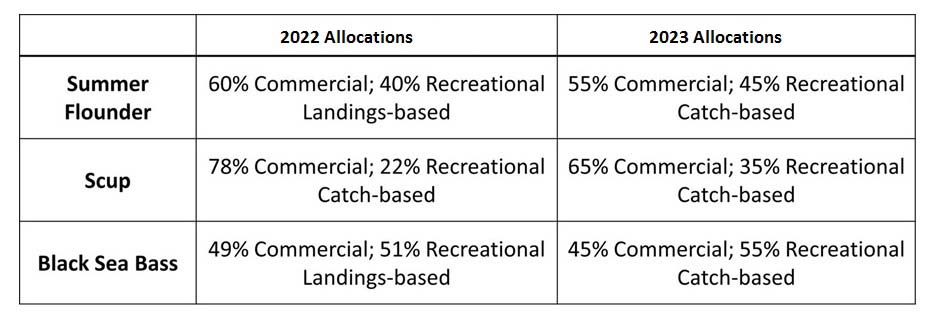According to the New Jersey Division of Fish & Wildlife the commercial fishing sector in New Jersey harvested just 91.5% of its allocated commercial fluke quota in 2022. That’s kinda nice that the comms left 8.5% of their unused quota free to swim in reserve, but it also reflects an issue of sorts that remains with fairness and equity in fisheries management.
In February of 2022 I wrote an editor’s log called The Crumb Bums that ticked off a bunch of my friends in New York. Honestly, I’m not sure if it was the title of the column or the subject matter that got these Empire State angling buddies of mine more upset, but the fact of the matter was that we had one bite at the allocation apple for black sea bass, porgy and summer flounder in late 2021, but fell flat due to the New York delegation at the Mid-Atlantic Fishery Management Council (Council).
If you take a look at that old column, the Council, along with the Atlantic States Marine Fisheries Commission, had opened up deliberations on proposed changes to the commercial and recreational allocations of summer flounder, scup, and black sea bass. As per their press release, “These changes are intended to better reflect the current understanding of the historic proportions of catch and landings from the commercial and recreational sectors.”
Using updated Marine Recreational Information Program (MRIP) data, the management bodies looked at new 2014-2018 statistics that showed a truer proportional breakdown for fluke as being 60% recreational versus 40% commercial; the average landings for porgies come in at 44% recreational versus 56% for commercial between 2004 and 2018; while in terms of black sea bass the average 2009 to 2018 catch proportions show recreational fishermen with 76% of catch over the commercial sector’s 24%.
During the discussion and debate over an allocation change – and knowing the commercial sector was digging in their collective heals to keep the old allocation plan in place – New Jersey’s Adam Nowalsky offered a reasonable compromise that combined old recreational surveys with the newer MRIP datasets, recommending an equitable 50/50 split on fluke, a 63.5/36.5 commercial to recreational quota for scup, and a 40.5/59.5 commercial to recreational allocation for black sea bass.
Using fluke as an example, while the decades old allocation favored commercial fishermen 60/40, the MRIP data itself supported a 60/40 split in favor of recreational sector, which made Nowalsky’s compromise motion more than fair. Still, the commercial sector was adamantly opposed to handing over any more quota, leading to the New York members of Council offering a secondary motion that killed New Jersey’s proposal. Or as my editor’s log title surmised it “left saltwater anglers with another 20 years’ worth of crumbs.”
So starting with 2020 in terms of fluke, recreational fishermen received a 5% bump in the allocation from 2022 to 2023 based on this vote, even as a more than reasonable motion had offered a full 10% allocation change.

That of course brings me back to the opening paragraph of this week’s editor’s log; the commercial fishing sector did not want to compromise fairly during the allocation debate, arguing in favor of old recreational data while refusing to accept that, statistically speaking, the new data shows the recreational sector needs and deserves a larger bump in fluke quota to make optimum use of the fluke fishery.
Another 5% or so of quota towards 2023 recreational harvest limits would’ve gone a long way towards improving the fluking angling experience. Not only would the commercial fishermen not have missed those scant percentage points, they still would’ve had another 3.5% surplus of unharvested fluke quota to boot.
And that to me is downright crummy.


